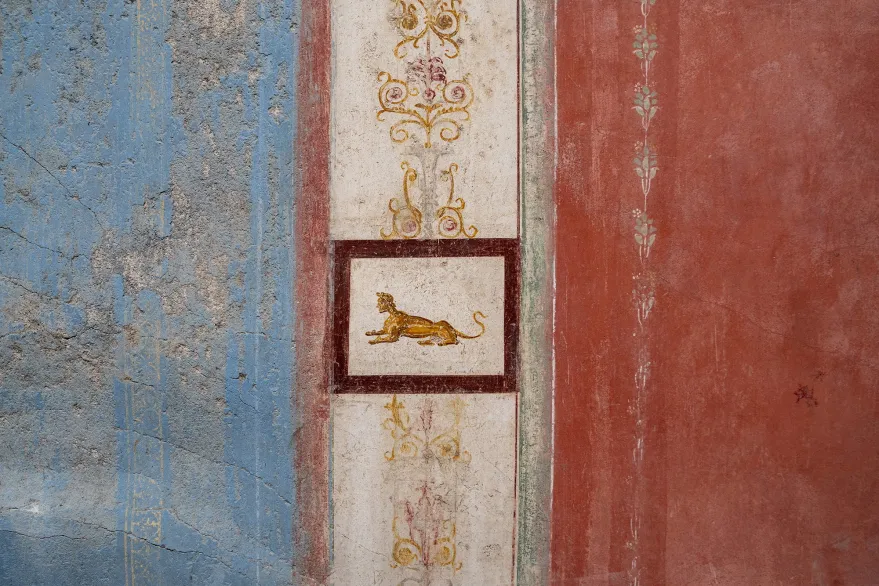Archaeologists in Pompeii have recently uncovered a small yet intricately decorated dwelling known as the House of Phaedra, featuring well-preserved frescoes of mythological scenes. This remarkable find provides a fresh perspective on the architectural and artistic styles of the first century AD. Named after Phaedra, the mythological Athenian queen depicted in one of its vivid wall paintings, the house is notable not only for its artistry but also for its unusual layout, which diverges from the typical Roman architectural style of the era.
Unlike most Roman houses, which were built around a central atrium with a pool to collect rainwater, the House of Phaedra lacks this traditional open space. Despite its compact size, the dwelling’s high-quality frescoes and elaborate decoration rival those found in much larger and more opulent residences within the ancient city, according to a statement from the Pompeii Archaeological Park. The house’s central location and rich ornamentation suggest it may have belonged to a resident of some status.
The eruption of Mount Vesuvius in AD 79 buried Pompeii and surrounding areas under volcanic ash, preserving the city in exceptional detail. This disaster, which killed thousands of unsuspecting Romans, has ironically allowed modern archaeologists to study the everyday lives, homes, and artistry of ancient Romans. The House of Phaedra, now fully revealed after centuries underground, adds another layer to our understanding of Roman urban life and architectural trends in Pompeii before the city’s tragic end.
The frescoes in the house depict scenes from well-known myths, including Phaedra’s ill-fated love for her stepson Hippolytus, who rejected her advances. Other paintings illustrate a mythological encounter between a satyr and a nymph, as well as gods believed to be Venus and Adonis. The vivid scenes are framed by intricate patterns and detailed images of nature, showcasing the exceptional craftsmanship and vibrant color palette typical of Pompeian frescoes.
The House of Phaedra’s mythological themes and artistic quality are comparable to those of larger villas, demonstrating that even smaller homes could be richly adorned. These findings highlight the significance of mythology in Roman culture and suggest that even modest dwellings were sites of personal and artistic expression.
This new discovery invites further exploration into the diversity of Roman architectural practices and provides a snapshot of the cultural values held by Pompeii’s residents, preserved by the very ash that consumed their world. The House of Phaedra is now a part of Pompeii’s storied legacy, offering both scholars and visitors a glimpse into the past lives of those who once called this ancient city home.
READ MORE:
